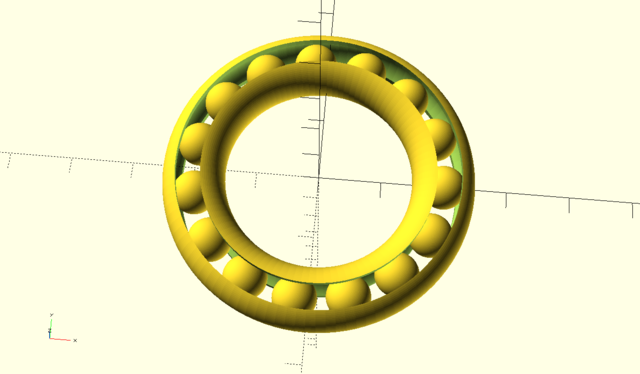Ben Z. Yuan - How to Make Almost Anything
Week 4: 3D Scanning and Printing
This week
3D printing happens. Also, an attempt is made at 3D scanning.

Group assignment: 3D printing
The group assignment this week was to characterize the design rules of the 3D printers we have access to.
Since others are characterizing the printers in the EDS shop (e.g. ekohrs, evansc), natalie and I decided to characterize a different printer – a Lulzbot TAZ6 belonging to the Sidney-Pacific Graduate Residence.
We downloaded ghassaei’s printer test pattern and printed it on the TAZ6 with a target layer height of 140 microns (“High Detail” preset in Cura) using white eSUN PLA+. This is what came out:


The TAZ6 is able to produce the sharp (!) point on the cone as well as the narrow blocks and slots, and is able to produce the curved surfaces within the limitations of the chosen layer height. However, we were unable to get the discs to actually rotate.
Individual assignment: 3D printing
The individual assignment this week was to print an object that could not be made through purely subtractive means (i.e. with only a rigid chisel).
Objects that pose challenges for subtractive methods include those with overhangs and/or voids. One example of a mechanism with overhangs is a ball bearing:

I created the shape in OpenSCAD (file) and exported it to STL for printing. It was somewhat unfortunate that the final rendering and export process took upwards of 5 minutes, and produced a 30 MB STL file. This is one of many limitations of OpenSCAD.
The Stratasys uPrint SE operated by EDS has a dual-extruder head, allowing it to print both model material and dissolvable support material. This capability was crucial to allowing the interior of the bearing to print properly.
While using the Stratasys we discovered that it was temperamental. I had to continuously monitor the print job for the first hour while it was running in order to ensure that the print was proceeding normally, and had to intervene twice to remove stray extruded material that would otherwise have caused catastrophic print failure. (Later I found out that the nozzle protector had been in need of replacement.)
After print completion the print is dipped into a solution to dissolve the support material. Once the support material is dissolved, what remains is a fully functional bearing. Two of the bearing balls were stuck to the outer ring, but were able to be freed using a sharp probe; the resulting bearing rolls relatively smoothly.
The wall thickness for the bearing in this case ends up pretty close to what appears to be a minimal thickness for the Stratasys printer. One could potentially remake the bearing to have thicker walls for more structural durability.

Individual assignment: 3D scanning
The EDS lab had two 3D Systems Sense handheld scanners. These were harder than expected to work with; many common objects (like coffee cups) proved too difficult for the scanner software to track, and 3D-printed objects tended not to return usable depth information.
Even in cases where objects can be successfully tracked for some duration, frequent backtracking is required, and the scanner will sometimes pick up on “background” data points making reacquisition of the object difficult if tracking is lost.
Eventually after much trial and error I was able to obtain a partial scan of a stuffed animal:

3D scanning would appear to require much refinement before being more broadly usable.